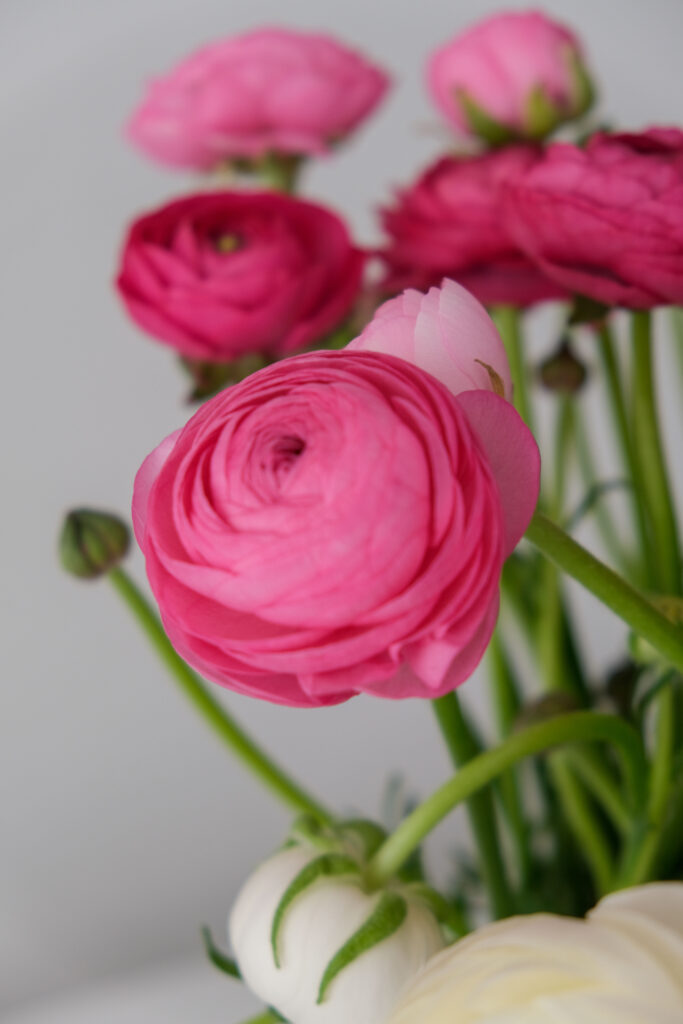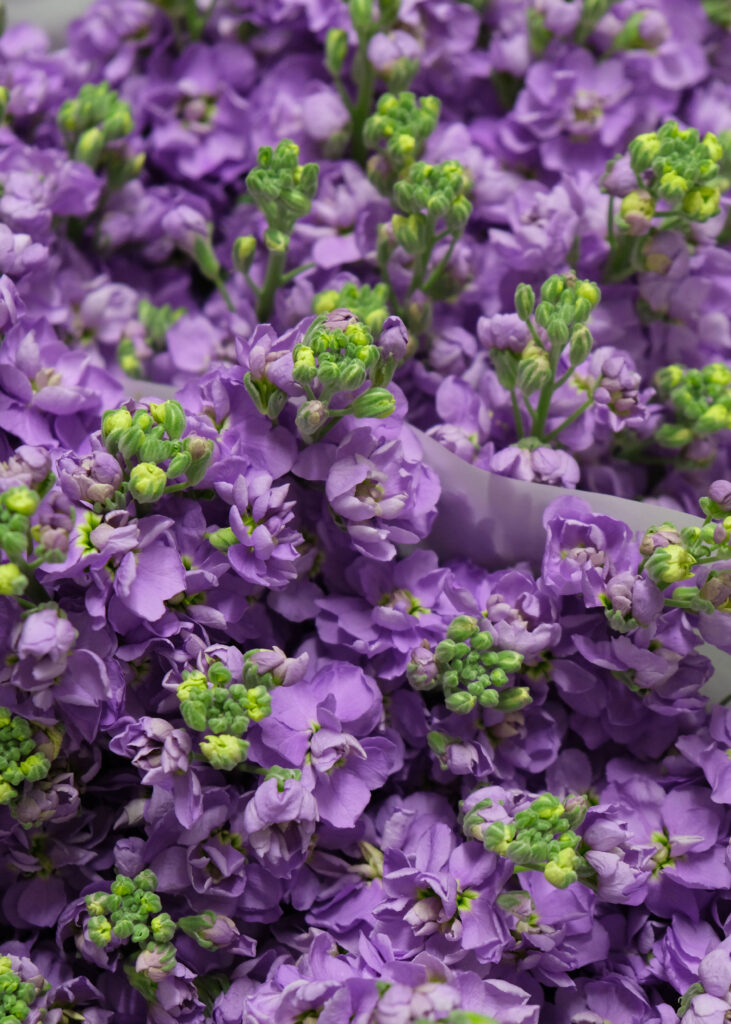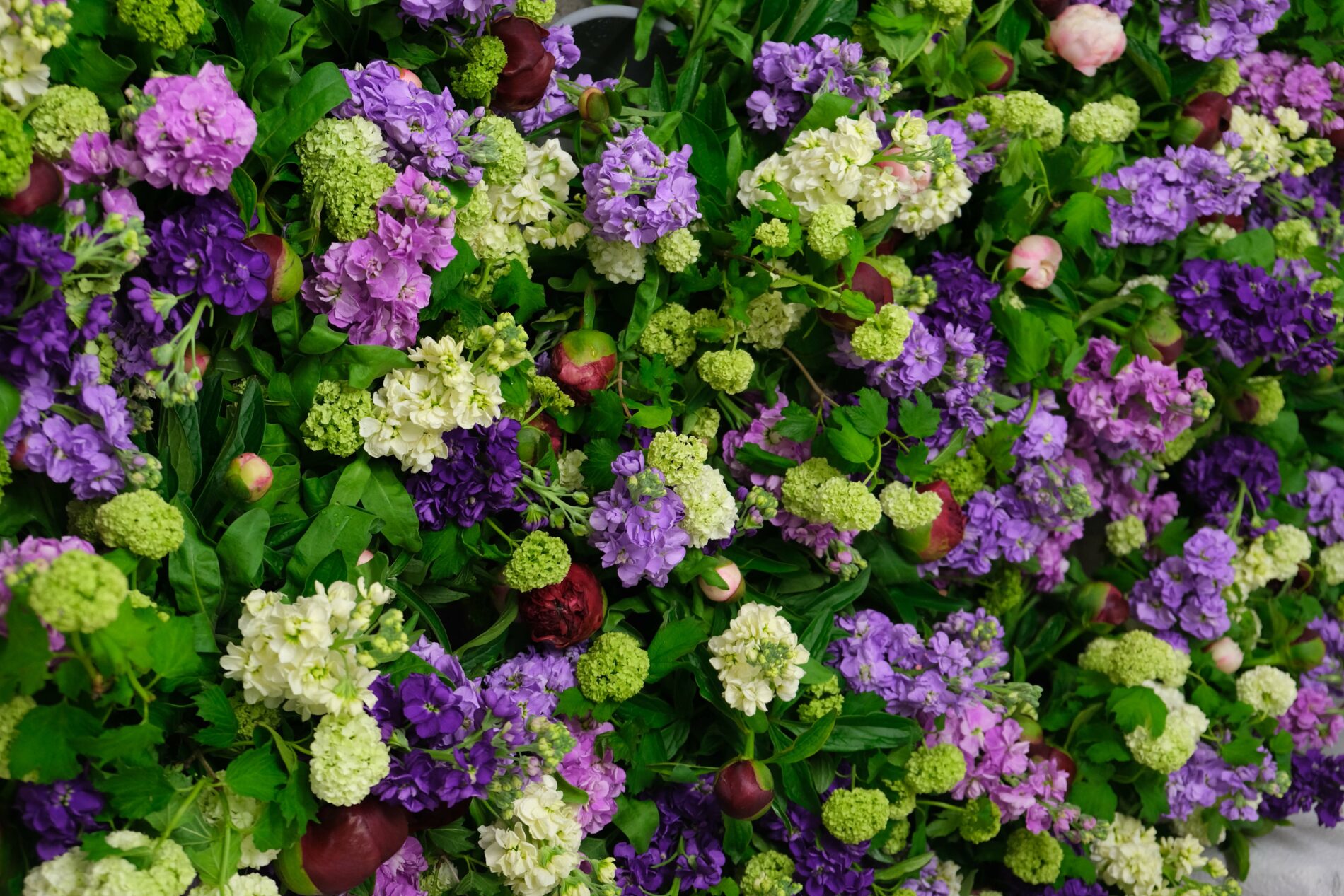The second part of our seasonal flower series presents Swiss and northern Italian flowers that bloom from April to June. We also give you useful care tips so that you can enjoy your cut flowers for as long as possible.
Reading tip: find out why you should choose Swiss and Northern Italian flowers in our first part.
Which flowers are in season in spring and at the beginning of summer?
Spring is the time when things really start to grow! So if you want to decorate your garden, now is the time to plant bulbs or sow flower seeds. Find out more here about the best way to do this – and get some tips for success!
Seasonal flowers in April

April is a colourful month. Among other things, you can enjoy the following flowers:
- Tulips in all colours
- big-eyed anemones (Italy)
- colourful ranunculus with their countless petals
- delicately scented freesias
- aromatic lilacs ranging from white to dark purple
- the bicoloured bearded carnations, which are also known as “bearded nails”.
- blueberry herb, which makes a good Easter wreath
- poppies with their papery flowers
Seasonal flowers in May
In May there are a few flowers with interesting names to marvel at. But the absolute highlight – and every year anew – are the fine-leaved, majestic, colourful peonies. Just look at them. That’s all we need to say. Other flowers in May are:


- high-towered levkojen in many colours
- Lupins – yes, it’s not just a snack!
- Lady’s mantle with its fluffy leaves
- fragrant rosemary with its blue flowers
- from the small snowball to large pom-poms
- cheerful daisies
- mysterious alstroemeria
- mountain knapweed with its extraordinary blue flowers
Seasonal flowers in June
Peonies and lupins continue to bloom happily in June. You can also enjoy the following flowers:
- joyful blue cornflowers
- blue thistles
- purple ornamental sage
- fragrant camomile
- candle-shaped blue veronica with its small flowers
- bell-like bearded fern
- exotic-looking golden balm in red or dark purple, which smells of lemon
- Physocarpus – the greenery with pink flowers

How to care for cut flowers
Here we show you in 5 simple steps how to care for your cut flowers after you receive them. Speaking of reception, it’s important to remember this in case it’s cold outside: give your flowers a quick 15 minutes to get used to the new temperature.
- Provide a clean vase. A dirty vessel could harbour bacteria that can rot the stems of your flowers.
- Fill the vase with lukewarm water. Cold water will give your flowers a cold shock!
- Add flower food and stir briefly with a clean object.
- Unwrap flowers carefully and cut the stems diagonally with a sharp knife or flower scissors. Caution: do not use normal scissors! They will crush the stems and prevent the flowers from getting enough water. This is a very important aspect if you want to enjoy your flowers for a long time.
- Arrange the flowers. There should be no leaves in the water, as this will cause them to rot quickly.
Then you should take care of your flowers as follows:
- Check the water level and change it every 2-3 days with lukewarm water. Clean the vase at the same time!
- Cut the stems every 2-3 days
- Sort out wilted flowers
Also make sure that your flowers are not exposed to draughts or direct sunlight.
Tip: If your bouquet is starting to wilt, try placing it in a warm water bath. This will make most flowers bloom again for a short time.











What do you think?